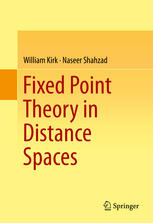

Most ebook files are in PDF format, so you can easily read them using various software such as Foxit Reader or directly on the Google Chrome browser.
Some ebook files are released by publishers in other formats such as .awz, .mobi, .epub, .fb2, etc. You may need to install specific software to read these formats on mobile/PC, such as Calibre.
Please read the tutorial at this link: https://ebookbell.com/faq
We offer FREE conversion to the popular formats you request; however, this may take some time. Therefore, right after payment, please email us, and we will try to provide the service as quickly as possible.
For some exceptional file formats or broken links (if any), please refrain from opening any disputes. Instead, email us first, and we will try to assist within a maximum of 6 hours.
EbookBell Team

4.0
76 reviewsThis is a monograph on fixed point theory, covering the purely metric aspects of the theory–particularly results that do not depend on any algebraic structure of the underlying space. Traditionally, a large body of metric fixed point theory has been couched in a functional analytic framework. This aspect of the theory has been written about extensively. There are four classical fixed point theorems against which metric extensions are usually checked. These are, respectively, the Banach contraction mapping principal, Nadler’s well known set-valued extension of that theorem, the extension of Banach’s theorem to nonexpansive mappings, and Caristi’s theorem. These comparisons form a significant component of this book. This book is divided into three parts. Part I contains some aspects of the purely metric theory, especially Caristi’s theorem and a few of its many extensions. There is also a discussion of nonexpansive mappings, viewed in the context of logical foundations. Part I also contains certain results in hyperconvex metric spaces and ultrametric spaces. Part II treats fixed point theory in classes of spaces which, in addition to having a metric structure, also have geometric structure. These specifically include the geodesic spaces, length spaces and CAT(0) spaces. Part III focuses on distance spaces that are not necessarily metric. These include certain distance spaces which lie strictly between the class of semimetric spaces and the class of metric spaces, in that they satisfy relaxed versions of the triangle inequality, as well as other spaces whose distance properties do not fully satisfy the metric axioms.